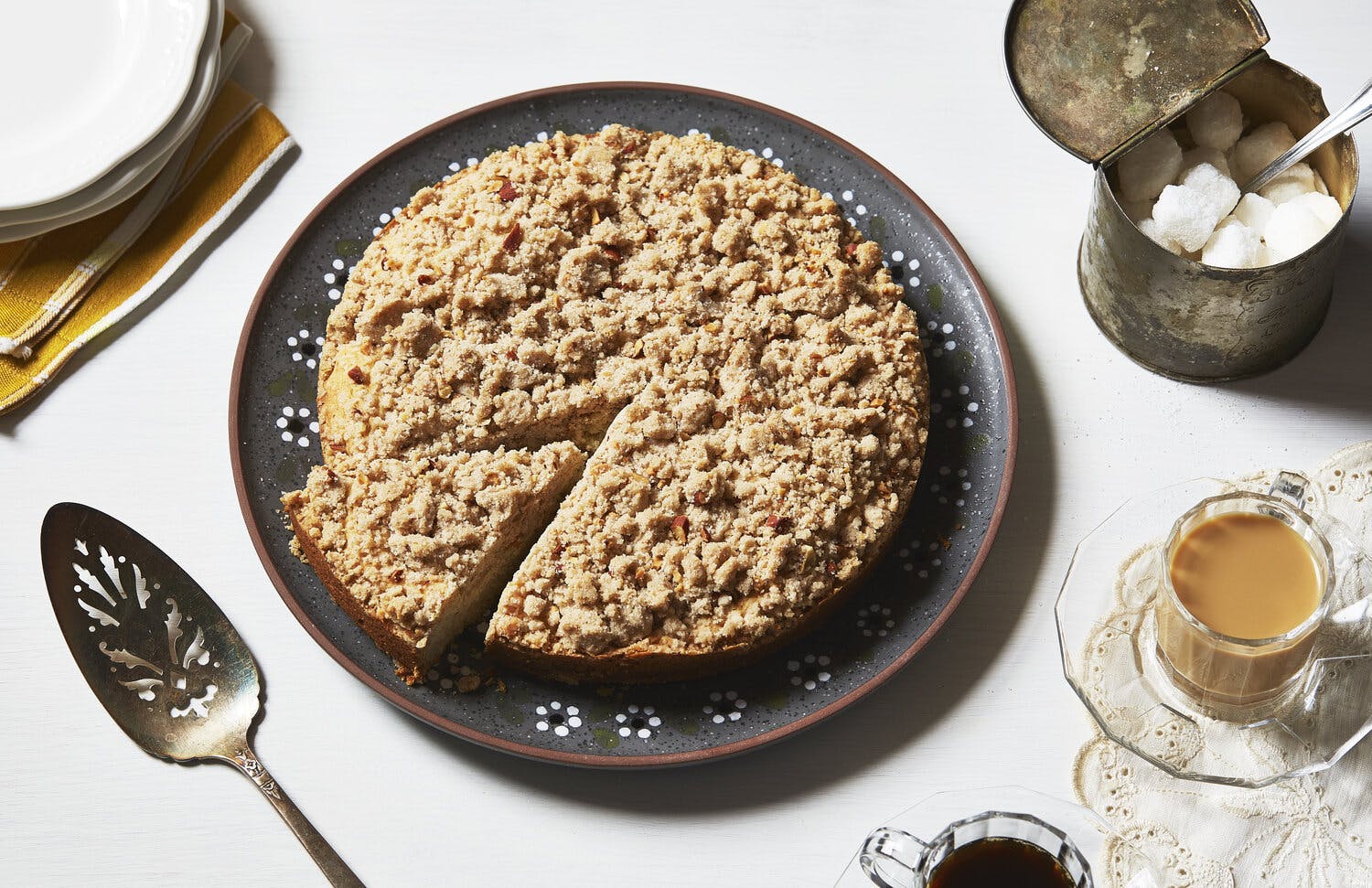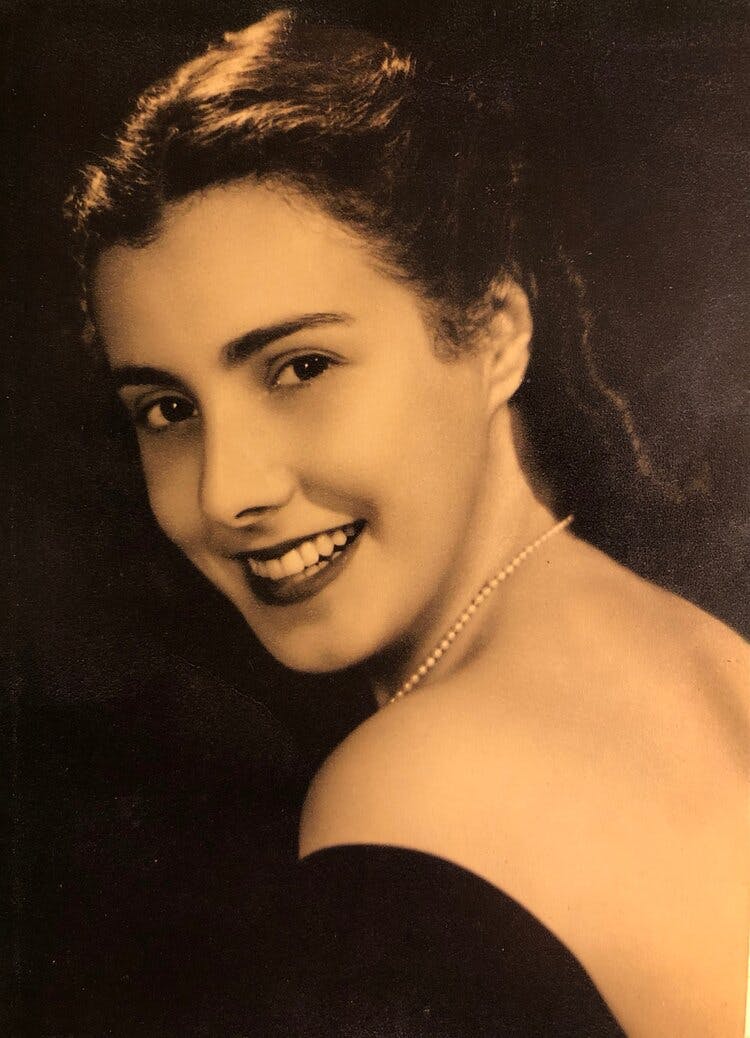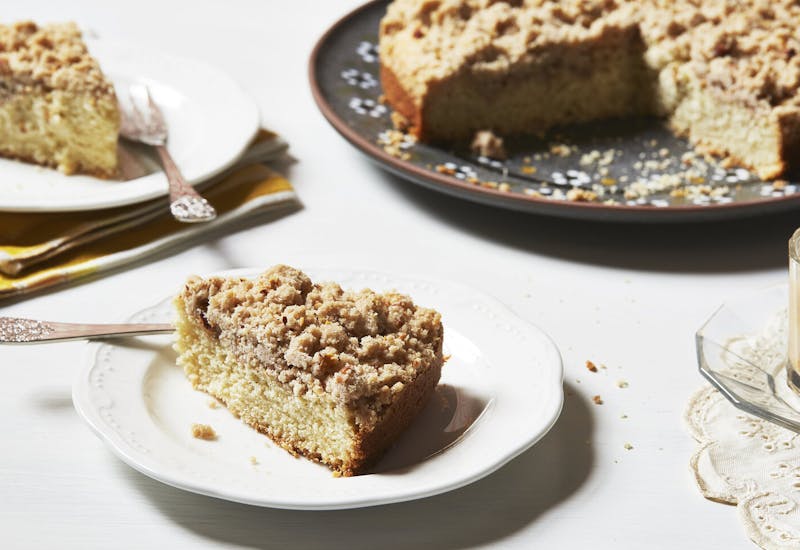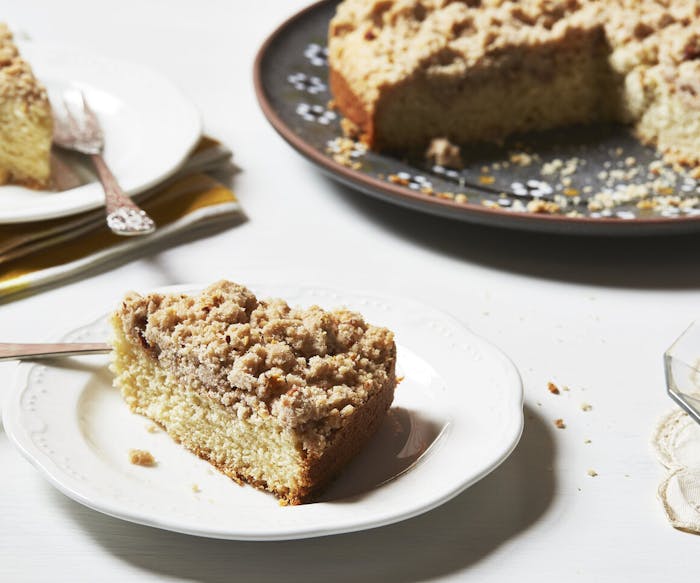Shared by Lindsay Gardner
The German Coffee Cake That Connects an Illustrator to Her Jewish Roots
The German Coffee Cake That Connects an Illustrator to Her Jewish Roots
Family Journey
“When I get home, we’ll build our castle,” James Moses wrote in a letter to his new bride Joann Felsenthal during World War II. He enlisted in the Marines and shipped out to Guam to serve in intelligence just after their wedding. Joann “was pregnant when he left,” explains their granddaughter Lindsay Gardner, an illustrator and author of “Why We Cook: Women on Food, Identity, and Connection.” So,“my grandfather didn’t meet my aunt until she was a year old.”
The war and the years leading up to it were a turning point for the family. Both James and Joann were raised in German Jewish families, whose relatives emigrated from Bavaria and Heidelberg in the mid-nineteenth century. In their new home, a relative became an abolitionist while another “started the Reformed movement in Chicago and founded Chicago Sinai in 1861,” explains Lindsay.
In the 1930s, as a Jewish student at Amherst College in Massachusetts, James experienced anti-semitism first hand. He also “befriended an Episcopal priest and started exploring Christianity,” says Lindsay. That journey continued when he returned home from the war with James becoming deeply involved in the church, but, “that didn’t extend to his social life at all,” says Lindsay. Many of the family friends were Jewish and Lindsay still recalls seeing tattooed numbers on the arms of a couple of their friends who had survived the Holocaust.
He and Joann decided to raise their children with both traditions. They went to church and to synagogue and were given a choice of which religion to adopt. “When they decided, they all chose the Episcopal church,” says Lindsay. “My mom always jokes it was because the cookies were better.”
Still, there were Jewish recipes that remained in the family through the generations. There is brisket that was served on Eastern, “noodles Antin,” which Lindsay later discovered is a riff on dairy kugel, and coffee kuchen, a German-style coffee cake. On the family recipe card, “it says, ‘add the streusel from the Settlement Cookbook,’” Lindsay explains, referring to the iconic Jewish cookbook. It’s a recipe Lindsay’s mother had as a child and one she made for Lindsay on special occasions. “I think it was served ironically on Christmas morning,” adds Lindsay.
She didn’t know the recipe’s Jewish past until adulthood though. Close to a decade ago, Lindsay began attending a friend’s annual Seder in San Francisco. “I fell in love with that holiday tradition and all of the symbolism,” she says. It sparked an interest in her family roots, which deepened as she researched a family tree, had children, and ultimately started working on her book. It prompted her to ponder: “What is my relationship to my own history through food?”
Lindsay started to ask her mother about their family recipes and the stories behind them. “I think knowing them deepens the relationship to them. It also makes me want to carry that forward in a different way,” says Lindsay. As a mom, she’s committed to investing in generational recipes and family history “so that my daughters understand that it means something and meant something and why… I think food, especially for children, is a way into that story.”



